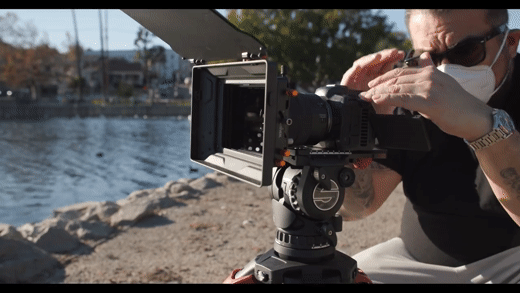A week or so back we were lucky enough to spend the afternoon with the Canon EOS R5C, the latest addition to the Canon EOS line of cinema cameras. Now, we only had the camera for a few hours so we didn’t get to do everything that we wanted but we were able to test out some of the most exciting features including both 8K 60p RAW Lite & 4K 120p recording, time-lapse shooting and some of the stills mode functions. We were shooting with a pre production model so there might be some changes to the camera before it officially hits the market in March of this year. With that disclaimer out of the way, lets dive into the camera and our thoughts!
As mentioned, the R5C supports internal 8K 60p RAW recording. For you R5 shooters, you know the frustration around limited recording time and with the R5C Canon has acted! The internal cooling fan gives you the ability to shoot uninterrupted 8K 60p so you no longer have to worry about recording shut off in the middle of a take. In our time shooting we ran into no issues with fan noise though we were outside at a skatepark and a lake with lots of noisy birds.
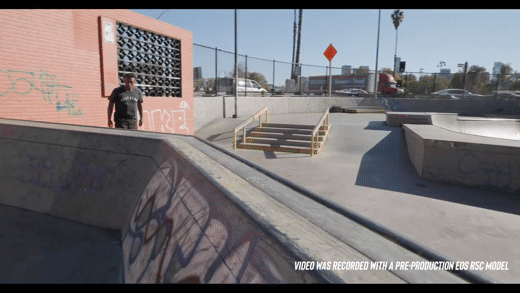
Now the footage we shot in 8K 60p was pretty clean. Honestly we might have slightly missed focus on our shots and we were fighting the Sun so its hard to judge without having a bit more time to dial in our shots. We were shooting handheld and took note of the electronic image stabilization. It was impressive to see how little shake was picked up with the IS enabled.
We also took some time to shoot 4K 120p of the water feature and swan boats at Echo Park lake. Because we were trying to shoot under the radar we didn’t have a wide array of lenses at our disposal. But we weren’t out of luck! With the full frame sensor of the R5C we were able to punch in and shoot super 16 to get the glimmer of the falling water and the action out on the lake.
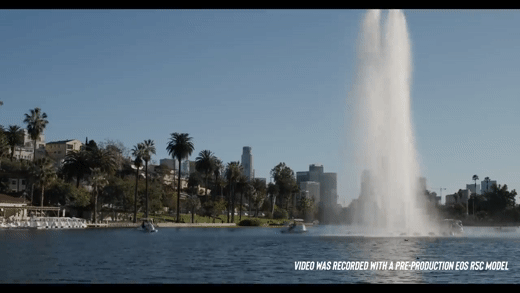
Next, we tried out the time-lapse function where we shot 1 frame every 5 seconds over a 20 minute period to get a few seconds of footage. We’re not time-lapse experts but found it to be super easy to set up. We also liked that we could preview the clip in camera without having to use a stitcher in post.
Of course we had to try out the stills mode on the R5C. Canon has made it super easy to switch from video to stills mode with the toggle switch at the top of the camera. There is a bit of a delay as the camera boots up, we timed it at about 4 seconds, so be wary of trying to quickly switch from stills to video to capture a time sensitive frame.
In stills mode we tried out continuous shooting in the silent electronic shutter mode so as to not disturb the ducks and geese as they fed on some water plants. The R5C is a more than capable stills camera with a 45 megapixel full frame CMOS sensor and Digic X processor. We captured some great shots of the birds that, even when we punched in, looked amazing.
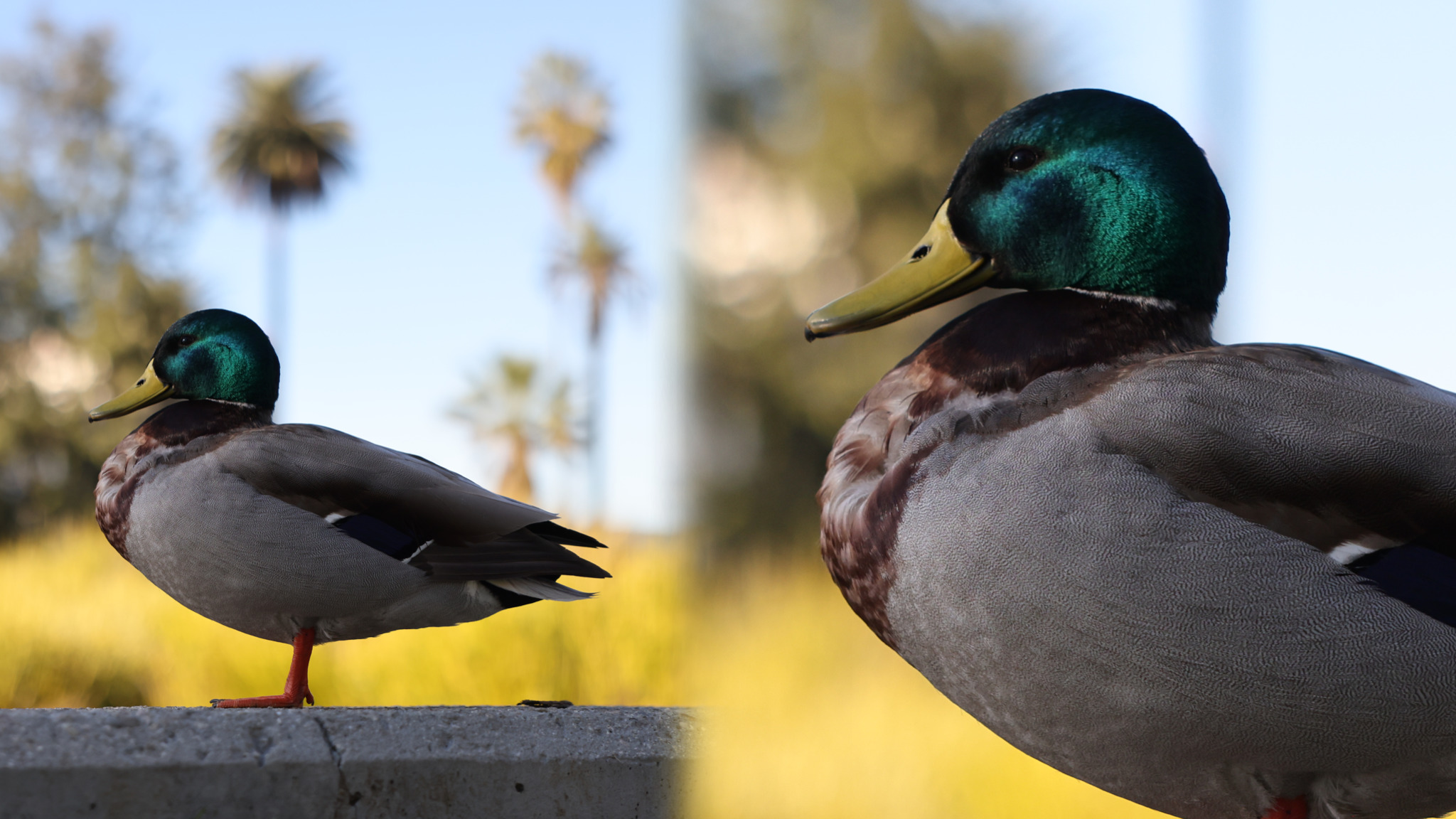
Now the R5C is certainly an impressive hybrid camera, but like every camera there are some things that we don’t love. To start, the R5C uses LP-E6NH batteries. Though they are very easy to get (and not too expensive) the R5C chews through them in very short order. Shooting 8K 60p we found that we went through a battery in around 30min and over the 3 hours we were shooting we went through about 4 batteries. There are some solutions, for example the R5 battery grip is compatible with the R5C. If you are looking to power the camera off of cinema batteries you can use the Anton Bauer D-Tap to DC in which we hope to test in the coming months!
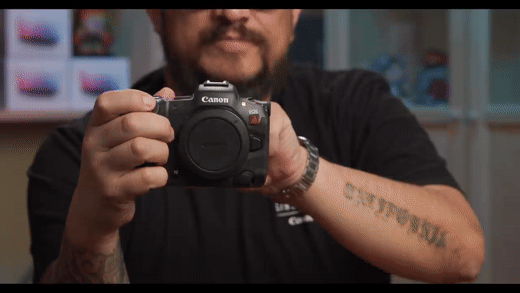
We also found the flip out screen to be a bit small. If you plan to use this as a cinema camera we suggest getting an external monitor like the Atomos Ninja V. The added bonus of using an external monitor is 8K RAW via the micro HDMI port which is a great to have.
Speaking of micro HDMI, the other IOs on the R5C are; USB-C port which you can use to power the camera, 3.5mm mic jack, headphone jack, PC sync and a timecode port. In our conversation with Canon they stressed that the time code port only works (currently) with Canare time code cables and not with the Blackmagic cables.
Staying on the topic of the R5C body, there are 13 programable buttons. Over all the shape of the camera is pleasant and it fits nicely into your hand. Its also very light at just 2.97lbs and is just slightly deeper than the R5 as it does have that added cooling system. There are two memory card slots which can take a CFExpress 2.0 type B and a SD card. If you are shooting any high frame rate footage, make sure to get a V90 SD card! You can read more about why you should use V90s here.
Overall we were really impressed by the R5C. We always like to think about who a camera is “made for” and for this one we see it hitting a few different types of creators. For the traditional filmmaker, this is a more than capable cine camera. For someone shooting stills, who perhaps want to dabble in video, the R5C certainly does the trick with its photo capabilities. Over all we see this as a great hybrid camera for the modern content creator. Its versatile yet extremely powerful and an absolutely welcome addition to the already stellar line of Canon cinema cameras. You can pre order the R5C today from Filmtools, it is priced at $4,499 and is expected to ship in March.

Filmtools
Filmmakers go-to destination for pre-production, production & post production equipment!
Shop Now